The first ice-making machine, a light bulb Thomas Edison used in demonstrations and the prototype Apple 1 computer.
Surprise finds on the “Antiques Roadshow” TV program? Nope. Just some innovative treasures you might discover if your travel itinerary includes some of the invention-focused museums I included in a story titled Spark your trip with invention-focused museums for msnbc.com.
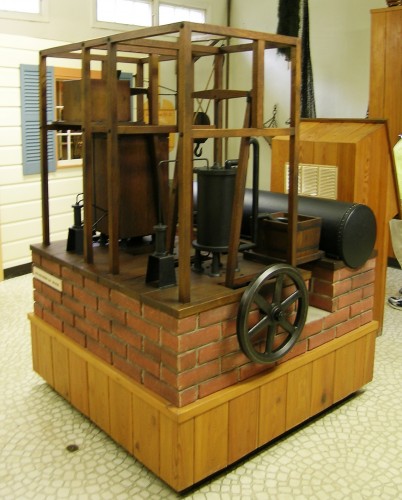
Replica of John Gorrie's ice-making machine
“What’s cool about these places is that it makes you appreciate that these things didn’t just appear out of thin air,” says Doug Kirby, publisher of RoadsideAmerica.com. “For example, at the John Gorrie Museum in Florida, even kids immediately understand the difference the invention of air conditioning made in their lives.”
Of course, traveling by invention isn’t just for kids. Or just for tourists. “It is common for members of a community — even long-time residents — to be unfamiliar with the hidden history that surrounds them,” said Ford W. Bell, president of the American Association of Museums (AAM). So consider adding some of these museums to your next local or long-distance vacation.
National Inventors Hall of Fame and Museum
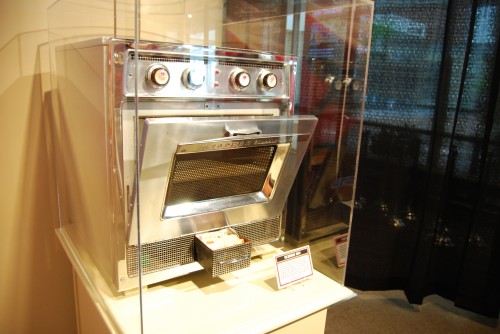
This $1200 microwave oven, made by the Tappan Stove Company in 1955, was an improvement over earlier models that stood over 5 feet tall.
Courtesy National Electronics Museum
The National Inventors Hall of Fame and Museum in Alexandria, VA, is an ideal spot to get an overview of American inventors and their creations. Located in the same building that houses the headquarters of the United States Patent and Trademarks Office, the museum has a gallery filled with interactive electronic portraits of Thomas Edison and other noted inventors as well as exhibits that change annually. The invention of Jell-O, Borden’s Condensed Milk and the commercial microwave oven are explored in the current exhibit, Inventive Eats: Incredible Food Innovations. While at the museum’s sister institution, the Invent Now Museum, in Akron, Ohio, there’s an exhibit titled The Art of Invention. Admission to both museums is free.
Schenectady Museum & Suits-Bueche Planetarium
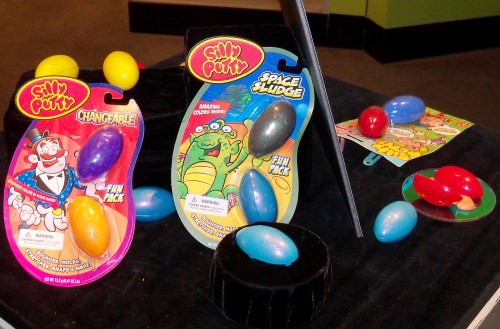
Schenectady claims it, not New Haven, CT, is the city where Silly Putty was invented. Courtesy Schenectady Museum
The Power House exhibit at New York’s Schenectady Museum & Suits-Bueche Planetarium explores inventions and innovations credited to General Electric and other companies based in New York’s Capital Region. According to curator Chris Hunter, the list includes cloud seeding (artificial snow), television, superconducting cable, artificial diamonds and lasers, as well as wind and solar technology. The exhibit also stakes Schenectady’s claim to being the accidental birthplace of Silly Putty – during experiments with silicone – during World War II. “The official Silly Putty site says that James Wright developed Silly Putty in New Haven, CT, but General Electric never had a lab in New Haven. Wright’s silicone patents list his residence as Schenectady or [nearby] Alplaus,” said Hunter.
John Gorrie Museum State Park
He’s technically the father of modern air-conditioning, but you may call him Mr. Cool. In the mid-1800’s, John Gorrie was a young physician in Florida fretting over how to cool the rooms of patients suffering from yellow fever. His solution: a machine that could make ice. In 1851, Gorrie received the first U.S. patent for mechanical refrigeration and today his contribution to cooling is celebrated in Apalachicola, FL at John Gorrie Museum State Park. The museum displays a full-size replica of Gorrie’s patented ice-maker and the facility is, as you’d expect in a town where summer temperatures can top 100 degrees, fully air-conditioned.
American Museum of Radio and Electricity

One of the original 60 incandescent lamps Thomas Edison used to demonstrate his invention t to the public in 1879.American Museum of Radio and Electricity
In addition to a collection of rare and remarkable radios, the American Museum of Radio and Electricity in Bellingham, WA documents what museum president John Jenkins describes as “the incredible number of electrical inventions produced in the relatively short time since Benjamin Franklin first described his famous Kite experiment.” Displays follow the electrical arc from Franklin through to the invention of radio and television and include the world’s first batteries, electrical motors, electric lights, telephony, telegraphy and assorted medicinal devices. The Electricity Sparks Invention gallery, for example, displays perpetual motion machines, a telephone used in the first transatlantic call and experimental light bulbs used in Thomas Edison’s laboratory in Menlo Park, New Jersey.
Computer History Museum
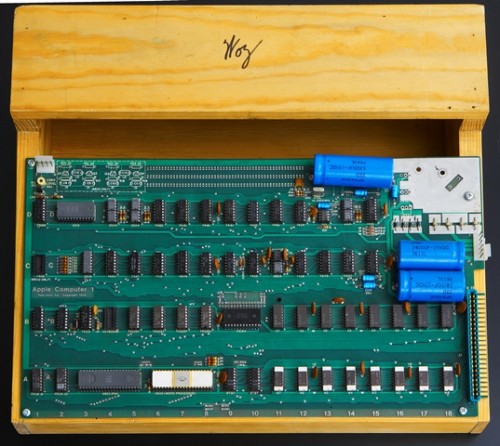
Apple co-founder Steve Wozniak introduced a prototype Apple 1 at the Homebrew Computer Club in 1976. Price: $666.66. Included: blank printed circuit board, parts kit and a 16-page manual. Not included: power supply, keyboard, storage system or display.© Mark Richards, courtesy of the Computer History Museum.
From its Mountain View, California home in Silicon Valley, the Computer History Museum uses artifacts that reach back to the abacus to tell the story of computing and its impact on society. Among the collection’s more than 1000 items are inventions that include the first disk drive, the first microprocessor, the first video games, the first computer mouse, the prototype for the original Apple iPod and one of the Google’s first servers. Not everything is run by micro-processors: also on display is the large punch card tabulator Herman Hollerith invented in 1890 that made it possible to shave seven years off the ten it took back then to tally the results of the U.S. census.
Corning Museum of Glass

Corning brought high tech into American kitchens with temperature-tolerant borosilicate glass – PYREX – in 1915 and Corning Ware in 1959.Corning Museum of Glass
The Corning Museum of Glass, in Corning, NY exhibits objects from glass history reaching back more than 3500 years. Also on display are a variety of Corning’s high tech, glass-based inventions such as the glass “envelope” that made Edison’s light bulbs possible in 1879, unbreakable Pyrex dishware introduced in 1915 and, from 1970, the optical fiber that essentially threw the “on” switch for the modern telecommunications revolution.
Heinz History Center
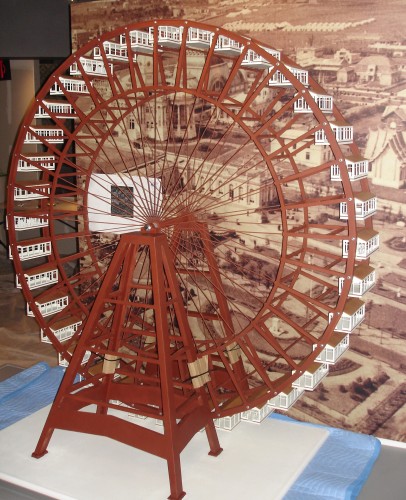
A moveable model of George Ferris’ wheel at the Heinz History Center
The Heinz History Center’s long-term exhibition, Pittsburgh: A Tradition of Innovation, celebrates home-grown inventions that include Jonas Salk’s invention of the Polio vaccine, the Big Mac, the world’s first Jeep (built in nearby Butler) and the first Ice Capades. Displays include an original transmitter from the world’s first commercial radio station, KDKA, and a model of the local iron foundry that built the world’s largest cannon. Also on display: a movable model of the giant wheel designed by Pittsburgh bridge engineer, George Ferris for the 1893 World’s Columbian Exposition in Chicago. The Ferris Wheel was almost 50 feet tall and rotated on a 71-ton, made-in-Pittsburgh axle.
Please check back for a look at even more museums that highlight inventions and innovations.
And please share your tips on museums with exhibits that highlight some great ideas.